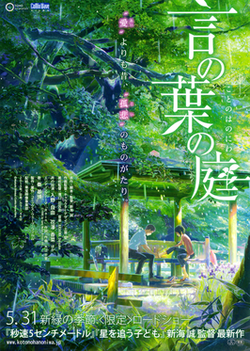言葉之庭

猜漢代一部文學作品
說苑
* * *
言の葉の庭
The Garden of Words
表白/傾吐/細訴的園地
心聲的庭園
促膝之庭 / 傾心之庭 / 細語之庭
言晤之庭 / 言喻之庭

(wikipedia: 言葉之庭)
posts
| comments
| archives
| links
| create
| song
(reminder: all quotes here are fiddled, probably.)
:: To sidebar

Pieces of aluminium, supposedly parts of a set of belt ornaments, were found in a Jin dynasty (AD 265–420) tomb during excavations in the 1950s. The authenticity of these finds was questioned at the time in view of the technology required to isolate aluminium from its ore.
*
In this review the archaeological and analytical evidence is reconsidered, but the matter remains unsettled, as it is known, from experimental evidence, that aluminium alloys can be prepared by the carbon reduction of alumina.
*
Examination of the thermodynamic data for this process in terms of Ellingham diagrams demonstrates unequivocally that the temperature required for this process is greatly in excess of that possible with Jin dynasty technology, and so the finds cannot be authentic.
*
However, it is quite possible that metallic objects containing small quantities of aluminium could have been produced in China at that time. The review ends with some speculation on how the pieces of aluminium came to be in the tomb.
The review ends with some speculation on how the pieces of aluminium came to be in the tomb.可惜我看不到全文 [3].
the blog correctly points out that there are only two explanations: It was a hoax (or a joke that got out of hand) on the part of one of the archeologists, or the ancient Chinese somehow had either a source or a way of refining pure aluminum. The second is obviously much more intriguing.
綠水長,青山高,自然風光好;
鳥兒飛,花兒嬌,萬物含著笑。
一陣風,一聲濤,頌讚造化的美妙;
一片雲,一棵草,啟示生命的秘奧。
且展開懷抱,來微吟短嘯,
能臨流登高好不逍遙,好不逍遙。
若非舉世盡滔滔,桃源何必夢裡找。
我引吭,我歌唱,唱出人們的希望,
興奮地迎接那明媚的春光。
我引吭,我歌唱,唱出人事的滄桑,
委婉地訴說那往事的淒涼。
春光無限好,往事總斷腸。
人間有悲歡,歌聲也有低昂。
歌一曲夜未央,忘去心頭的創傷,
愉快地追求那美麗的幻想。
Labels: song
The Shade of Orpheus / descends beneath the earth. The poet knows / each place that he had visited before; / and searching through the fields of pious souls / he finds Eurydice.
And there they walk/ together now: at times they are side by side; / at times she walks ahead with him behind; / at other times it's Orpheus who leads---/ but without any need to fear should he / turn round to see his own Eurydice.
The ghost of Orpheus passed to the Underworld, / And all the places that he'd seen before / He recognized again and, searching through / The Elysian fields, he found Eurydice / And took her in his arms with leaping heart. /
There hand in hand they stroll, the two together; / Sometimes he follows as she walks in front, / Sometimes he goes ahead and gazes back---/ No danger now---at his Eurydice.
Beneath the earth, the ghost knows all the places / he saw before. He finds Eurydice / in blessed fields. His yearning arms embrace her.
They stroll, now side by side, now as he follows, / now as he leads. And Orpheus in safety / can turn and look at his Eurydice.
Labels: classics